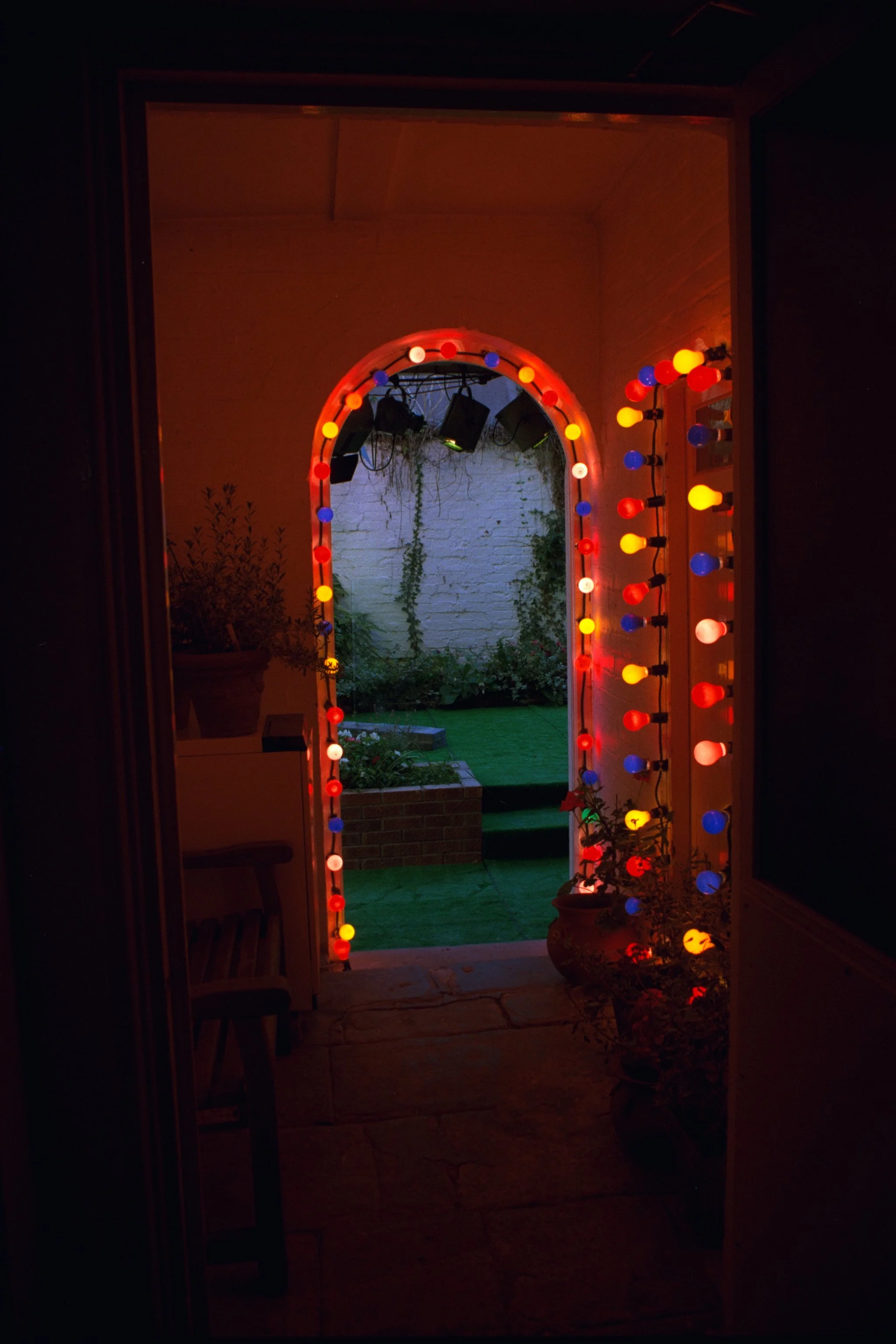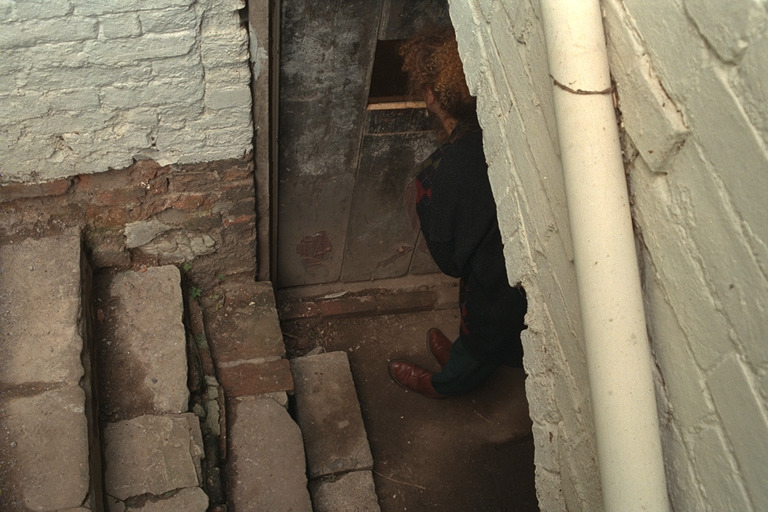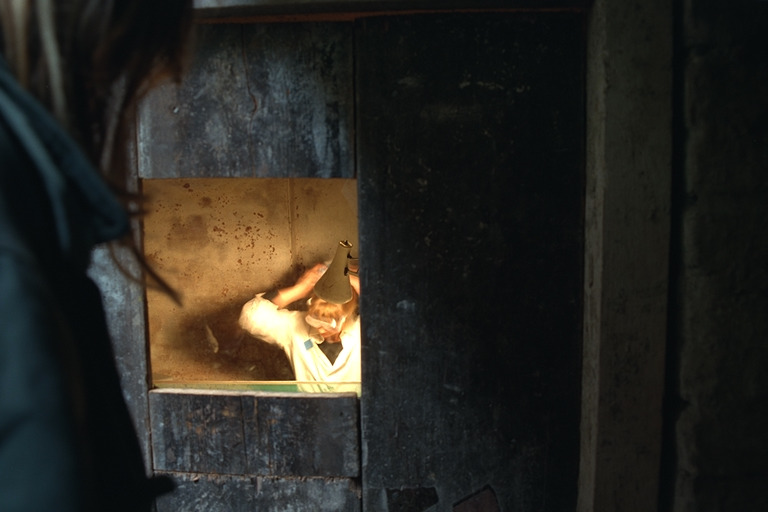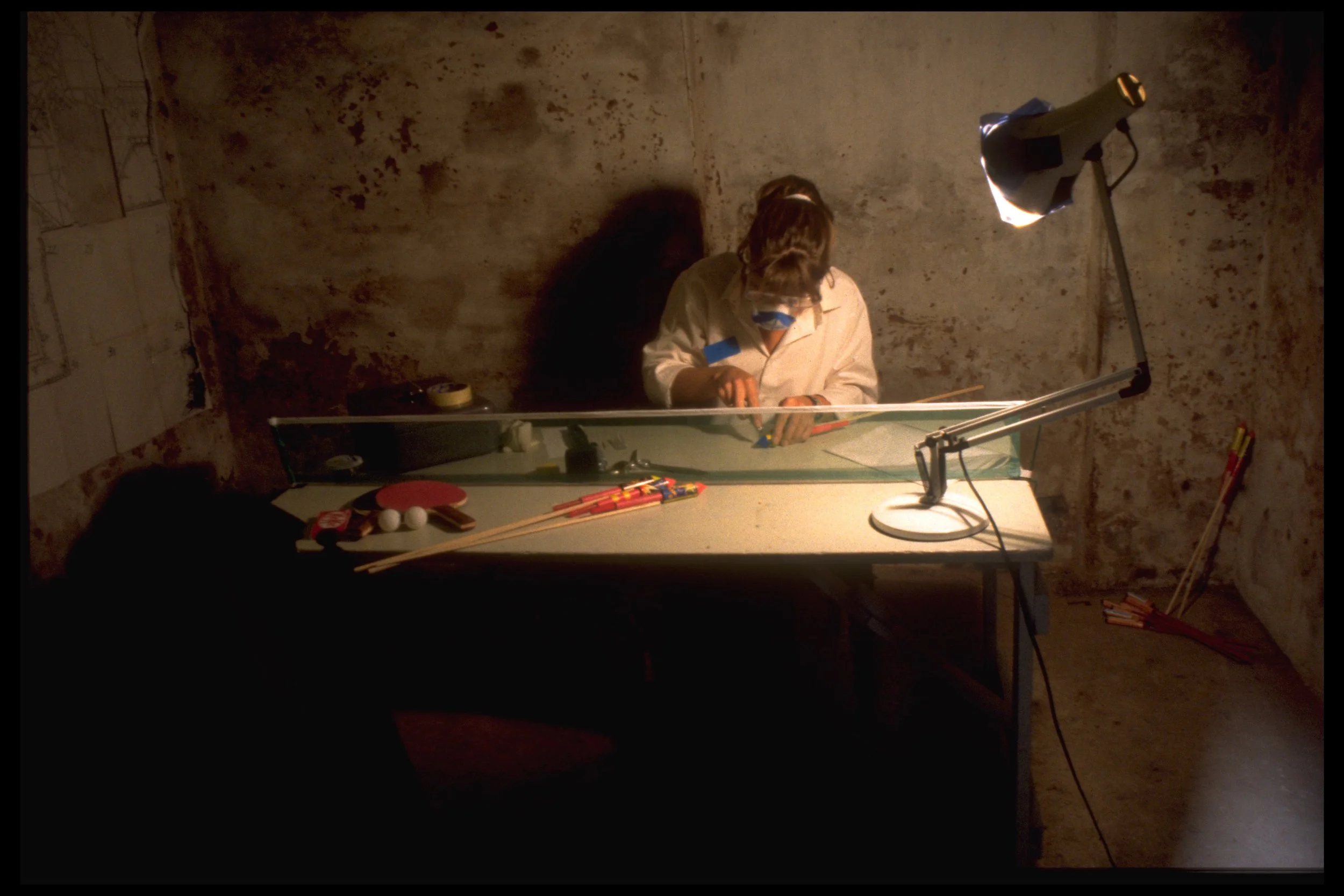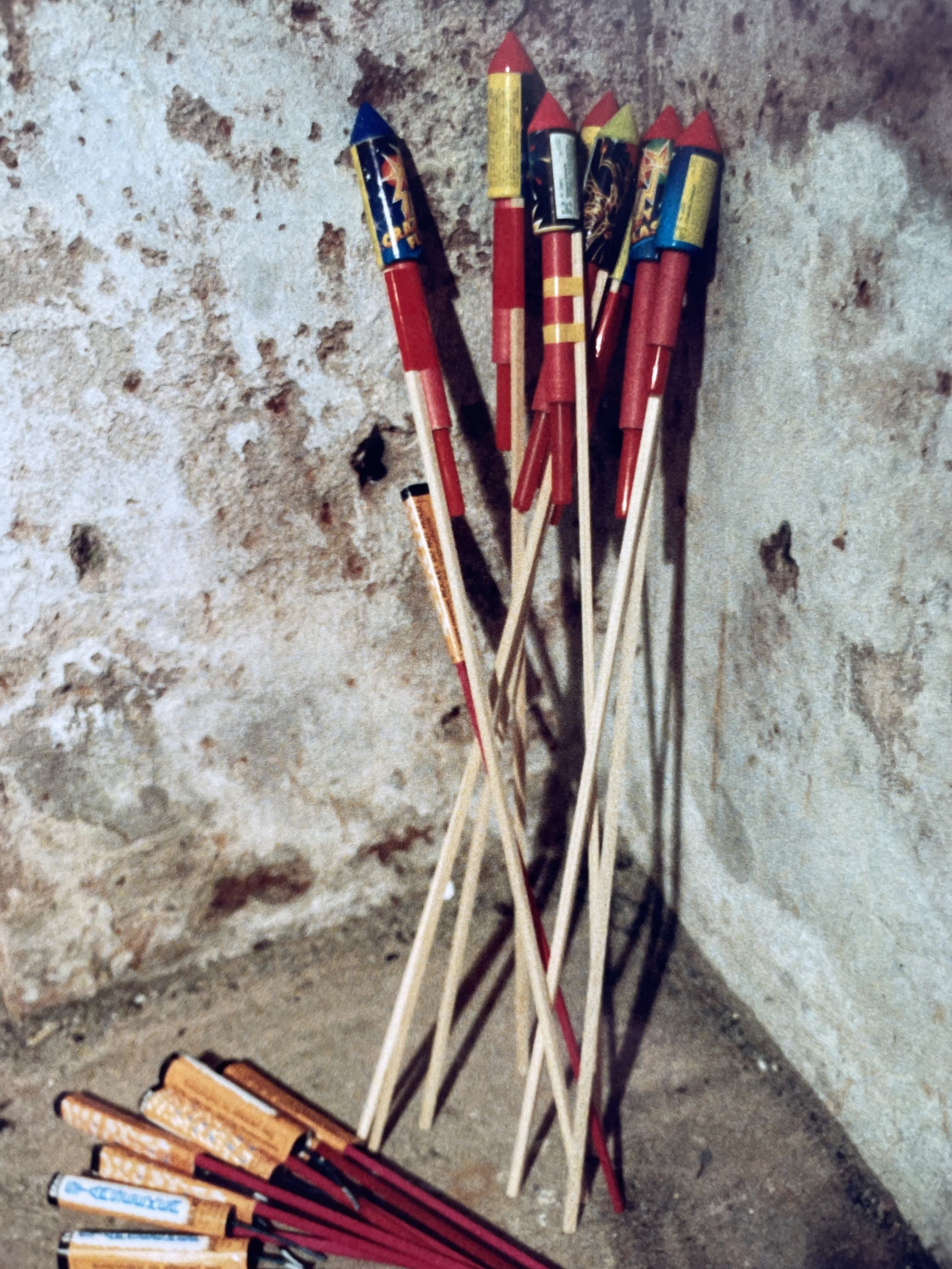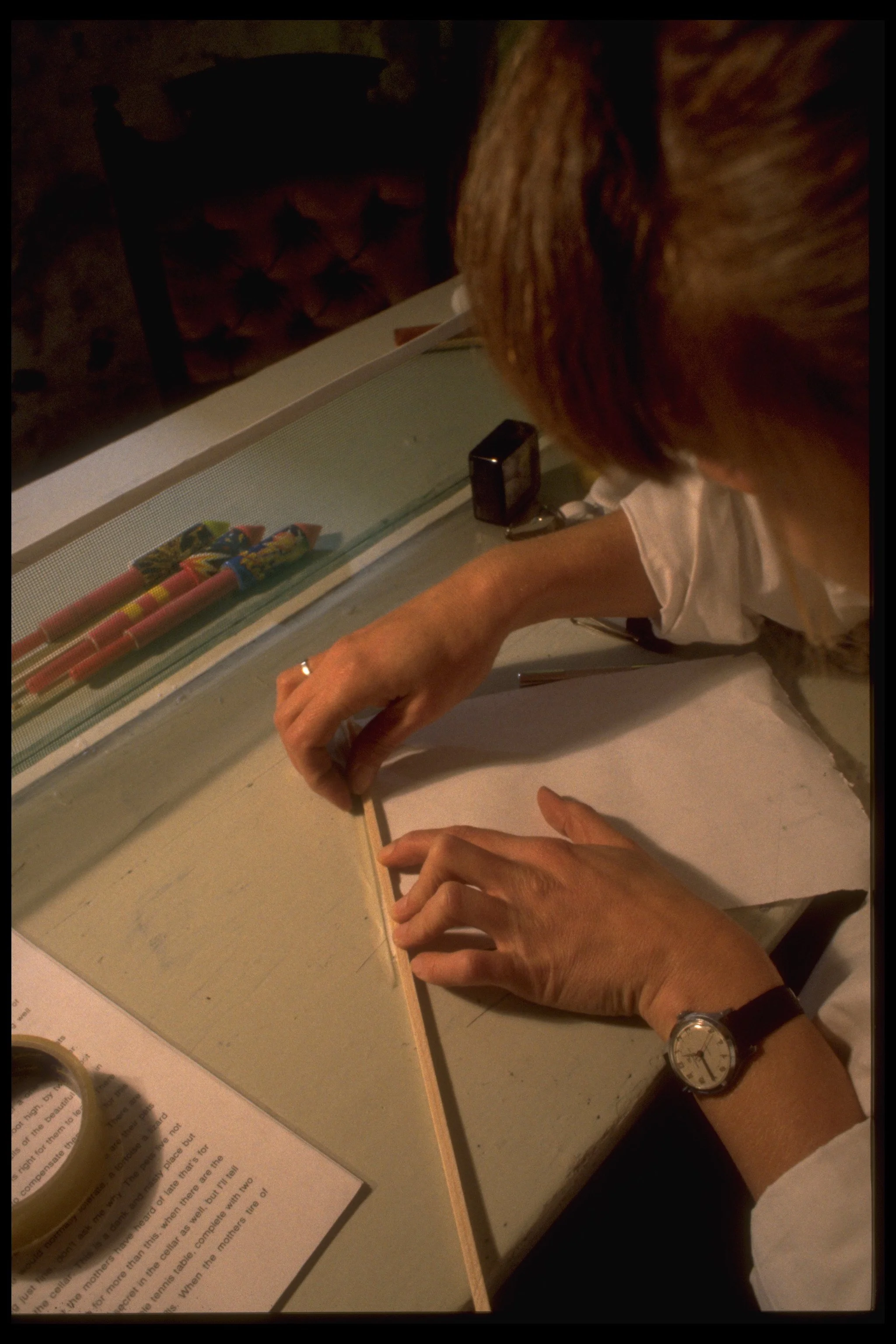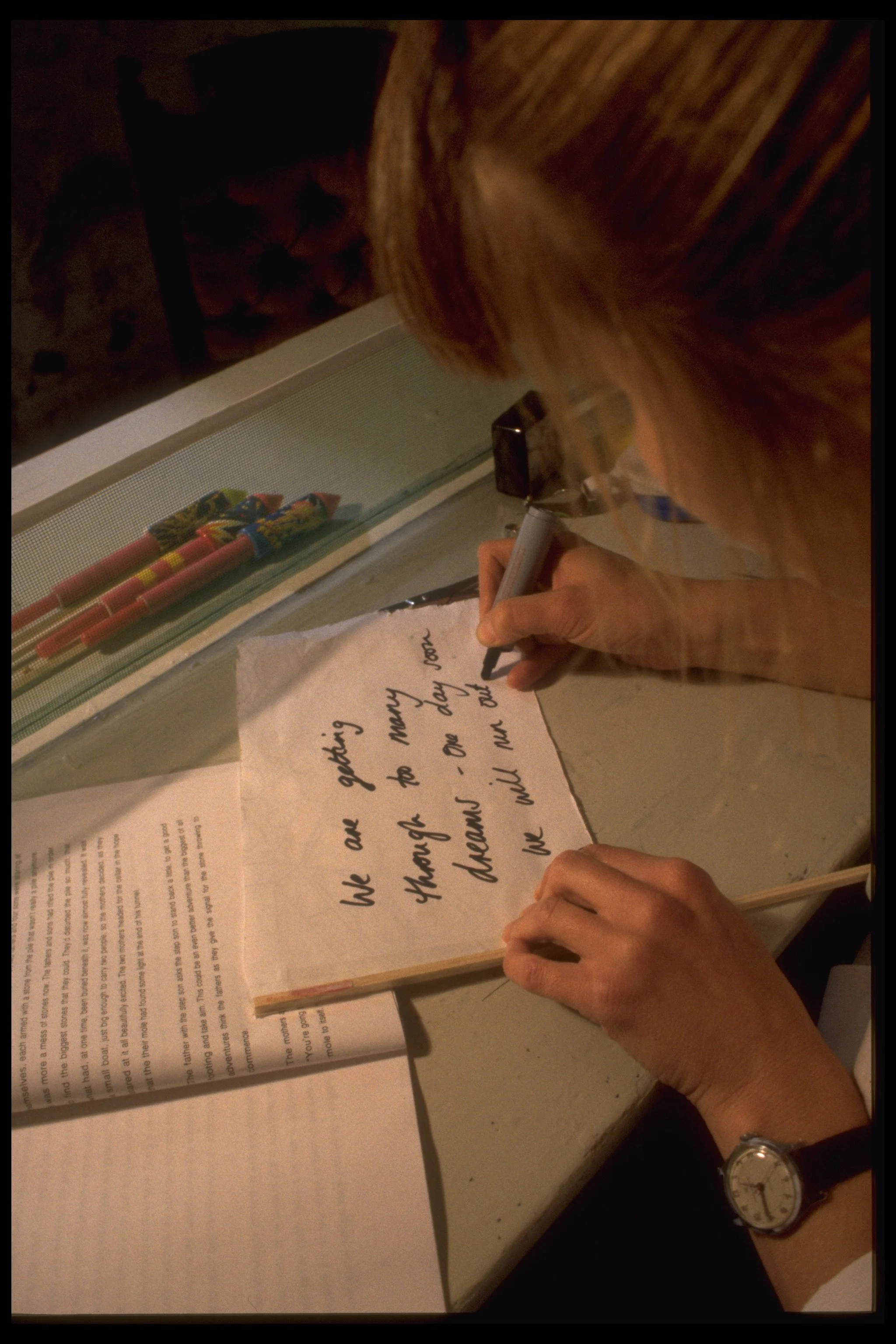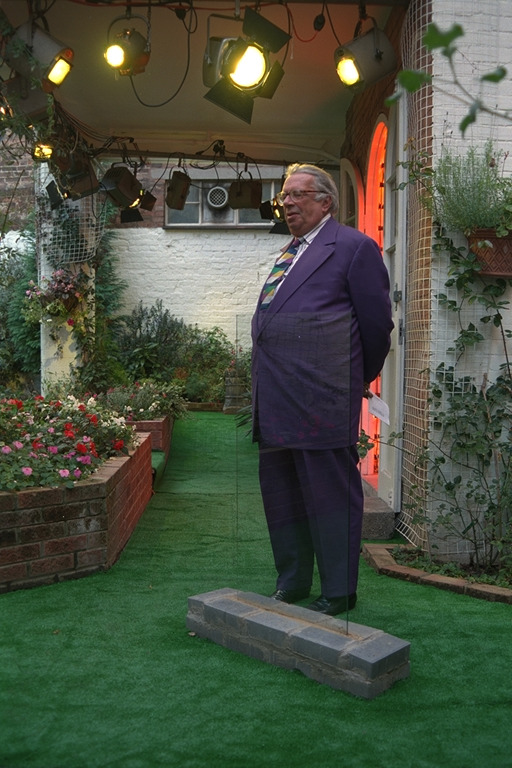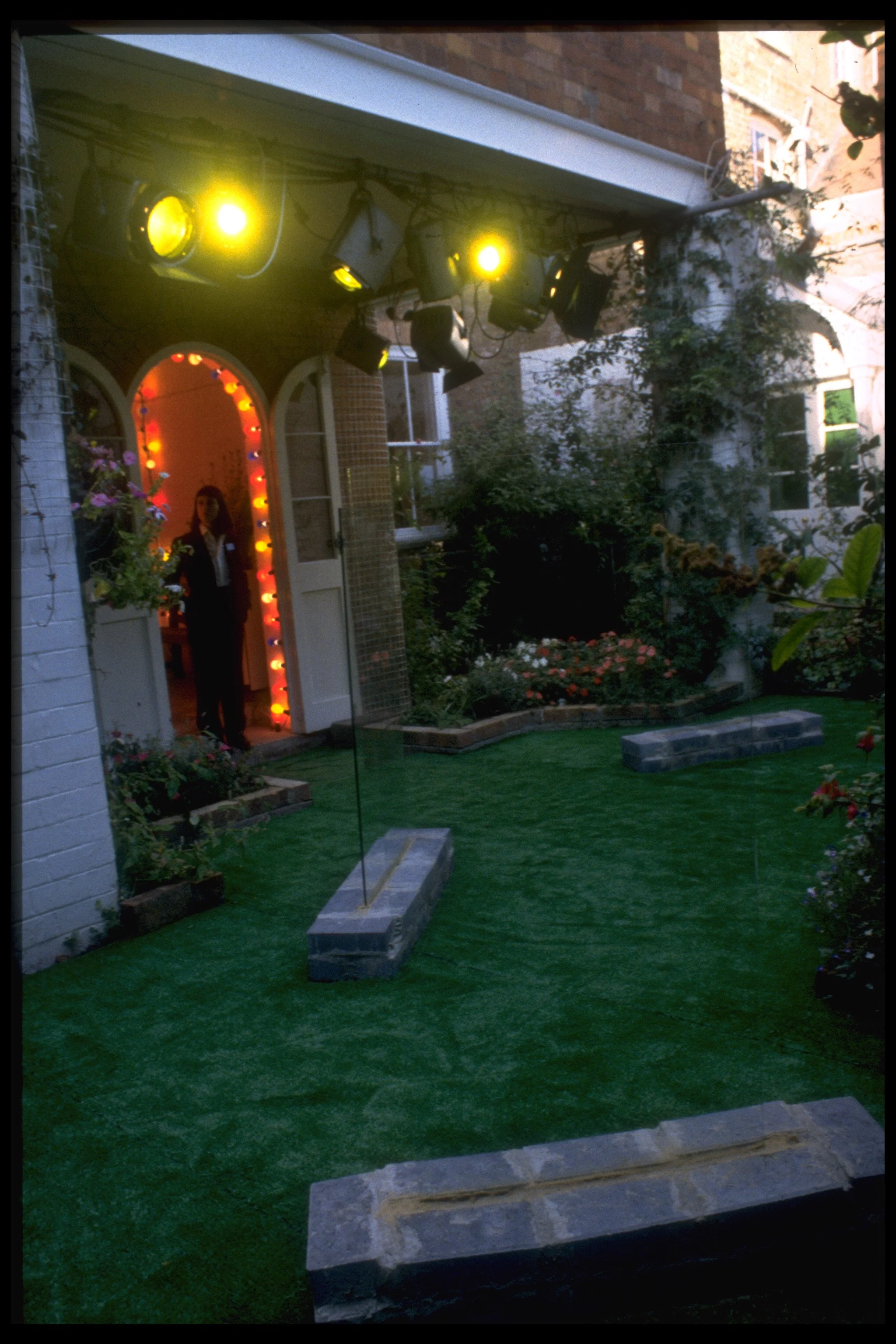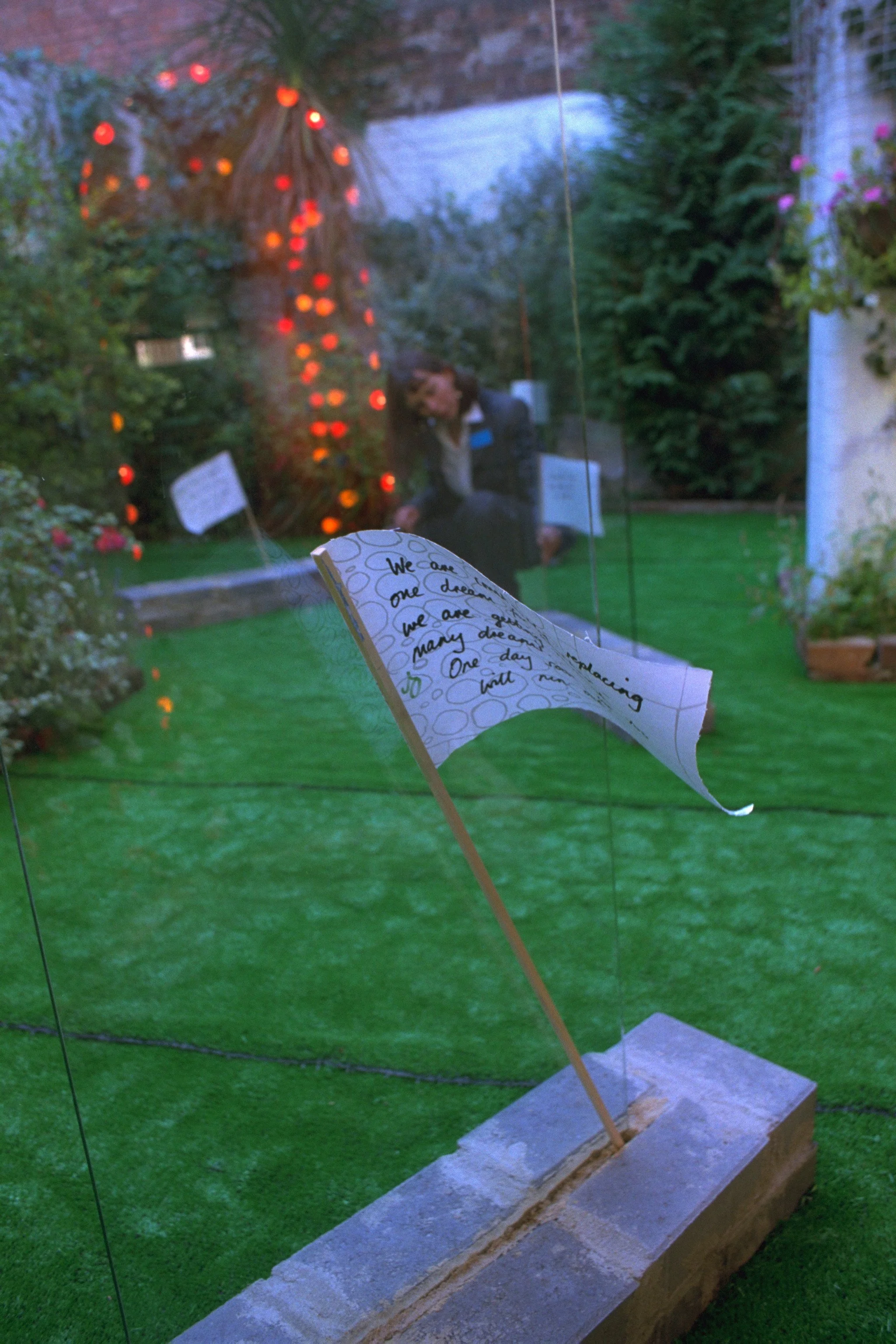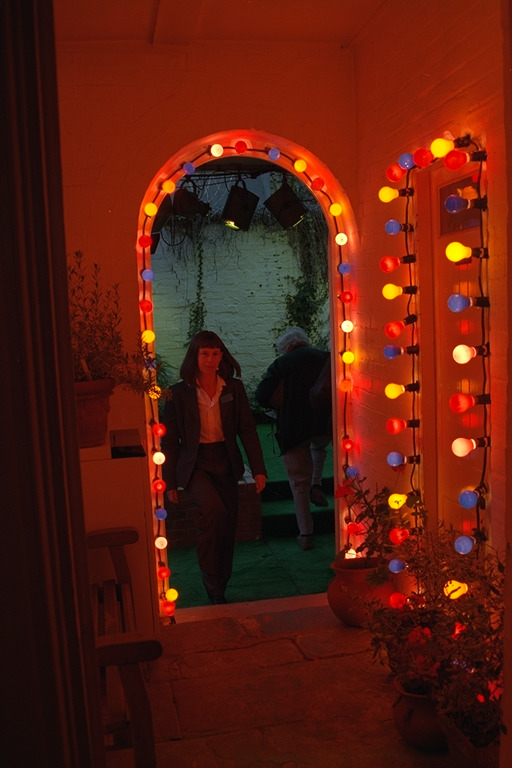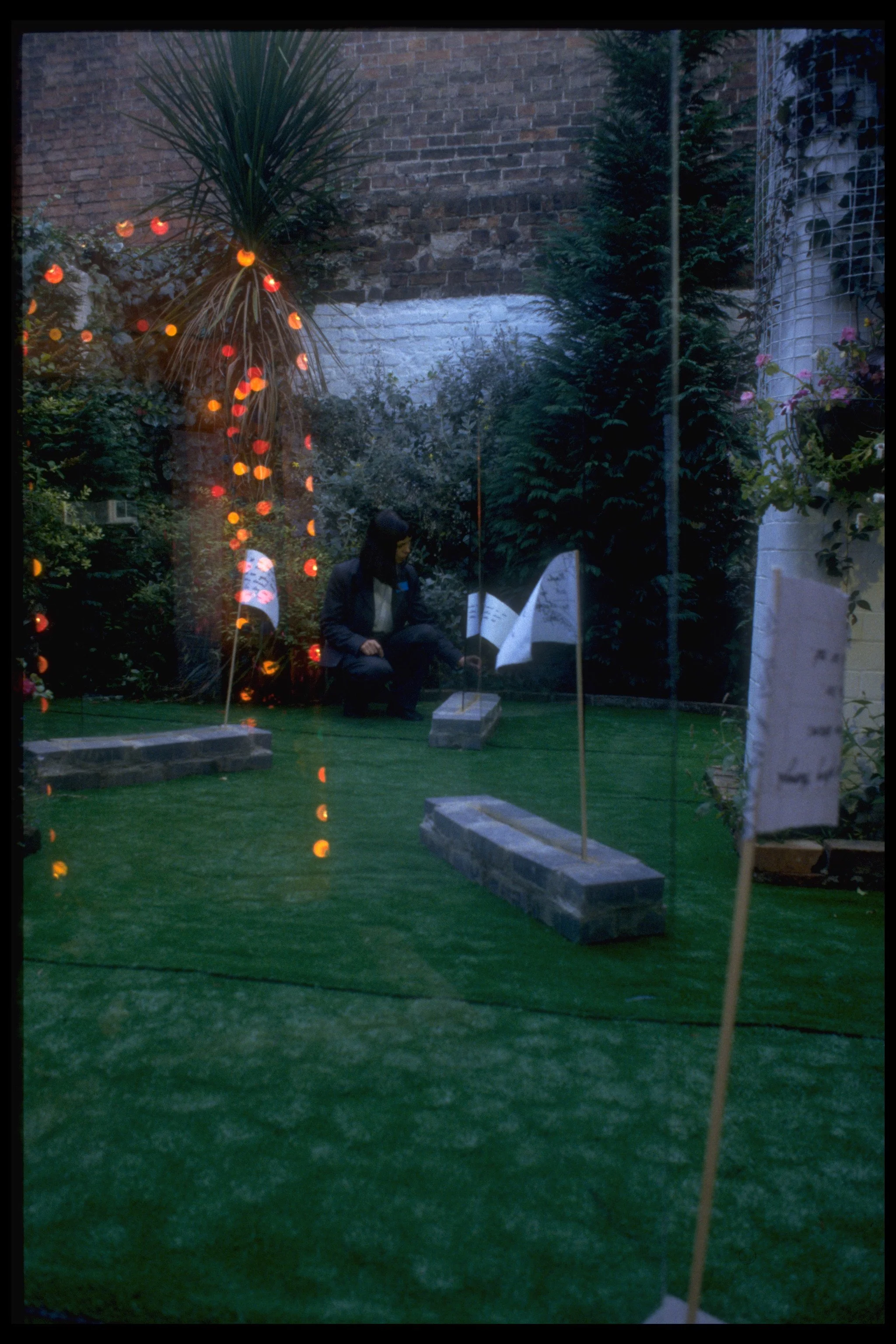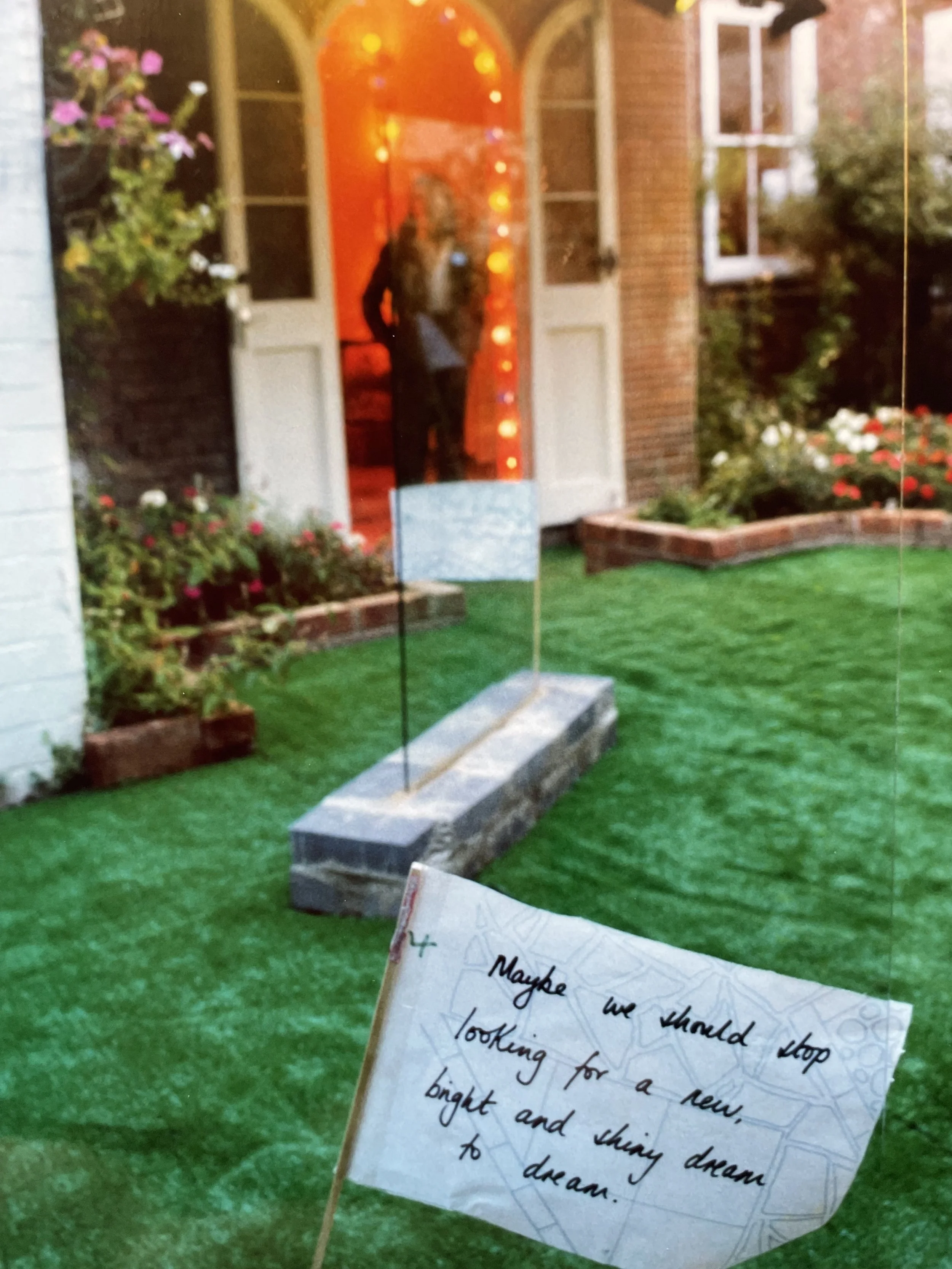THE ZWILLINGE PROJECT EPISODE 8 THE WALLED GARDEN
1 February 1997
Cambridge
Dear Melanie
...............
The site was not inspiring, despite its name - a walled garden, really it was a scrubby little paved backyard with a few flower beds at the back of a very uninspiring small town 'safe' Arts Centre. ............. It was not a space that had a life or a history, there was no sense of it being 'used' or valued rather that it was made 'use of'. The only redeeming feature was the flight of steps from the garden which led down to a tunnel about 30ft long and from which you could gain access to a small dark and dank cellar room.
Dissatisfaction, that's what I feel right now, when I think about Episode 8, dissatisfaction with the site and with the work that we made there.
Bridgwater itself - at first sight, an unremarkable, rather grotty small Somerset town - considerable rural poverty and deprivation. .........
Our two week residency began in early September - the newspapers and every discussion and conversation inevitably included mention of the hopes and excitement generated by the announcement of the IRA ceasefire. And then we discovered through delving in the library that Bridgwater's history is irrevocably linked with the English Civil war - the last battle of that war was fought just outside Bridgwater on Westonzoyland. We also discovered that the most interesting aspect of Bridgwater's cultural life was not located in its Arts Centre but in its tradition of an annual carnival procession and fireworks display which dismisses Guy Fawkes and takes over the town in early November.
On the outskirts of the town in disused garages and warehouses there are various Carnival Clubs which compete with each other to create the best float in the procession. The preparations take all year and practically every working class family in the area is involved in some way. I shall never forget going to visit one of the club huts where that year's float was being constructed - it was dark, we parked in a muddy little car park, in the distance there was fire burning which lit up the edge of the large warehouse. Inside there was a fearful racket, loads of men hammering, welding and installing thousands of lights onto the carnival float. It was surreal - I could not connect this world with the dismal one that I was seeing each day on the streets of the town - it seemed as if every ounce of colour, excitement, life and hope was being carefully hidden and saved for one day in the town's year.
So clearly, despite my initial dissatisfaction there was an awful lot to respond to coming from the site itself. For ourselves, the most pressing personal issue was the conflict between our roles as mothers and artists and the effect that it was having on Paul and Weaver and the kids. The sheer intensity of our workload over that year was affecting them as well as us...................
Conflict, whether national civil war or domestic strife seemed to be the point of connection between us and the site.
The last episode had looked at hopes and aspirations. We were talking about conflict and hopes for resolution, when you have to fight for what you want and when you get it - is it what you imagined?, is it worth it? is there disappointment? is there dissatisfaction? is there regret? Can fairy tales come true?
We decided to turn the garden into a bright and shiny, but artificial space, lit with carnival festoons, carpeted with artificial grass and extra illumination from green theatre lights to make even the natural plants seem unreal. We set up 7 vertical sheets of glass, like ghosts of gravestones, sometimes barely visible depending on the angle you viewed them from they made the garden into a hazardous space. The association of 'fairy tale' that came up for us from the space led us to ask Weaver to write a story for the Episode based on the fairy tale form. We gave him a set of ideas to work from - ............
artificial grass, carnival festoons, fireworks, theatre lights with green gels, 7 large sheets of glass, loudspeaker, cellar room, tunnel, map of the garden, 7 white flags, a fairy tale
dismantling fireworks, making paper flags, conversing with audience
additional performer: James Stringer
A few days later he faxed us "A Fairy tale for Torn Families", we recorded our voices reading it and it was played over a tinny tannoy system into the garden and the text was also displayed on the walls of the ante room.
In the cellar room, throughout the two hours of performance I systematically dissected and disarmed firework rockets wearing a face mask and plastic gloves. I then cut a small square from an enlarged map of the garden and on the reverse wrote an extract from the fairytale. The square was then attached to the rocket stick to make it into a flag which you collected periodically and placed next to one of the gravestones. The action was intended to be ambiguous was I collecting the gunpowder to make a lethal bomb? or was I disarming the rockets and transforming them into messages (flags) of peace?. Was my presence in the cellar hopeful or threatening?. (Much of the discussion in the media following the ceasefire was centring on the IRA's arsenal and the need for disarmament.)
There was a major reversal in our performance concerns and a step backward in that my element was task based and non-interactive. You fully took on the role of mediator with the audience and whilst you also had a framed performance task (collecting and placing the flags). I think that at the heart of my dissatisfaction with this episode is that I completely missed out on the interaction with the viewers - I have no sense of their reactions and responses and can only rely on your version of their interaction with you.
I began this letter by using the word dissatisfaction a lot, now that I have written this letter about Episode 8 I realise that dissatisfaction was what this Episode was 'about' rather than what I feel about it.
I also feel that despite all its flaws it was absolutely right for the audience that we wanted to speak to in Bridgwater. We weren't particularly interested in the usual Arts Centre crowd - we wanted to make contact with the people we saw in the shopping arcade and with the creativity and enthusiasm that they invested in the Carnival. An unsophisticated audience, not even comfortable with craft exhibitions and amateur dramatics plays. We put a lot of effort into drawing them in and provoking their curiosity. We handed out fliers in the shopping arcade - we literally threw open the doors and put a sandwich board out on the street, we caught people on the way home from work and shopping, we used an entrance which did not take them through the Arts Centre but down a short dark corridor which was illuminated at one end by carnival festoons which literally drew them in. We were very successful - we were overwhelmed by visitors and they were at times frustrated by the time limit we had to impose on their stay in the garden (because of safety) - they wanted to stay longer, they wanted to talk with you and hear the end of the story.
Episode 8 - The Walled Garden was simple, unsophisticated, maybe not very adventurous and limited by our tiredness and lack of initial inspiration from the actual site BUT it perhaps was the episode where we really integrated the key elements of The Zwillinge Project process which we have since focussed upon. The material came from the a) the site itself b) what was happening in the world at that time c) our personal concerns AND we were absolutely clear about our target audience. We knew who we wanted to speak to and I know that we did speak to them.
...................
Kirsten
from a series of letters written by the artists on each episode
